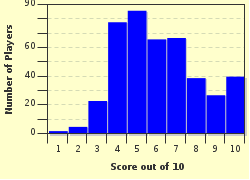Quiz Answer Key and Fun Facts
1. The Columbine High School shooting brought an average suburb into sudden notoriety, a very unwelcome notoriety. Which city became the unwilling target of media and speculation?
2. Who was/were the perpetrator(s) of the Columbine High School shootings?
3. How many people were murdered in the Columbine shootings?
4. Which song was recorded in relation to one specific person related to the Columbine shootings?
5. One of the victims was the school valedictorian, shot while hiding under a table in the library. Her mother's earlier story as a teacher coming back from a debilitating illness was portrayed in the Lifetime movie "Dawn Anna". Who was this student?
6. Though there were no pairs of siblings that died in the Columbine shootings, Craig Scott was the sole survivor of three students who hid underneath his table in the library. Meanwhile, his sister was victim number one, killed outside the school while eating lunch. What was the sister's name?
7. As evidence mounted that showed that the shooting was planned at least a year in advance, the local sheriff's department and state Bureau of Investigation sought to prove there was a conspiracy that went beyond the shooter or shooters involved, and that there were survivors who had helped plan the event.
One student, in particular was singled out and named in spite of minimal evidence. This student later wrote a book called "No Easy Answers". Who was this student?
8. In relation to the Columbine incident, what was "Atlanta"?
9. A makeshift memorial was set up on "Rebel Hill", just across the street from Columbine High School, consisting of crosses for each student killed in the incident. Where are the crosses today?
10. What ended the shootings at Columbine?
Source: Author
Eauhomme
This quiz was reviewed by FunTrivia editor
DakotaNorth before going online.
Any errors found in FunTrivia content are routinely corrected through our feedback system.

